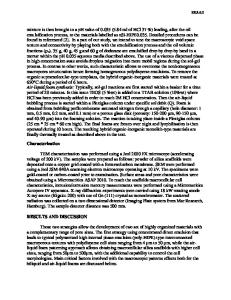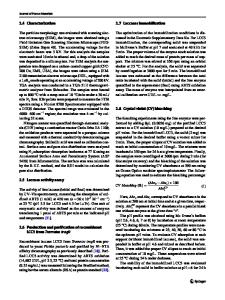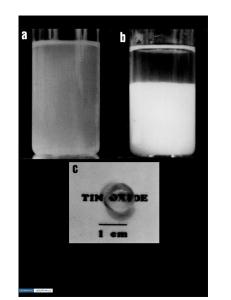Hierarchical Macro-Mesoporous Silica Monolith
- PDF / 3,781,003 Bytes
- 6 Pages / 612 x 792 pts (letter) Page_size
- 33 Downloads / 350 Views
EE9.6.1
Hierarchical Macro-Mesoporous Silica Monolith Tomohiko Amatani,† Kazuki Nakanishi,† Kazuyuki Hirao,† and Tetsuya Kodaira‡,§ Department of Material Chemistry, Graduate School of Engineering, Kyoto University, Kyotodaigaku-Katsura, Nishikyo-ku, Kyoto 615-8510, Japan. ‡ Nanoarchitectonics Research Center, National Institute of Science and Technology, 1-1-1, Higashi, Tsukuba-shi, Ibaraki 305-8565, Japan. § PRESTO, JST, Japan †
ABSTRACT Monolithic pure silica gels with hierarchical macro-mesoporous structure have been synthesized via spontaneous sol-gel process from silicon alkoxide using a structure-directing agent and a micelle-swelling agent. Monolithic body with well-defined co-continuous macropores is a result of concurrent phase separation and sol-gel transition induced by the polymerization reaction, whereas the mesopores are templated by the cooperative self-assembly of inorganic species, a structure-directing agent and a micelle-swelling agent. The following removal of surfactants by heat-treatment gives silica gels with hierarchical and fully accessible pores in discrete size ranges of micrometers and nanometers. The highly ordered 2D-hexagonal arrays of mesopores have been confirmed by X-ray diffraction measurements and FE-SEM observations. Furthermore, by further additions of the micelle-swelling agent, the mesostructural transition from well-ordered 2D-hexagonal arrays to mesostructured cellular foams (MCF) have been induced accompanied by minor modifications of the micrometer-range structure. INTRODUCTION Since the discovery of the ordered mesoporous materials in the early 1990s,1-3 they have attracted much attention due to their fascinating structures and wide potential applications in the fields of separation, optics, drug delivery and supports for catalysts. In spite of a drastic progress in the synthesis of mesoporous materials, however, the preparation of materials with a simultaneous control of morphology and pore structure in different length scales still remains as a challenging task. If monoliths with well-defined pore structures in discrete length can be synthesized, a lot of benefits arise from such integrated pore systems. On the other hand, a novel sol-gel process to fabricate well-defined macroporous monoliths has been established based on the polymerization-induced phase separation in various silica-based sol-gel systems.4 The co-continuous macroporous structure in which both separated phases are interconnected has been attracting substantial attention in separation science field.5,6 Recently, the preparation of organic-inorganic hybrid gel with hierarchical macro-mesoporous structure has been reported in the system containing 1,2-bis(trimethoxysilyl)ethane (BTME) as a Si source and P123 as a structure-directing agent.7 On the other hand, by using tetramethoxysilane or tetraethoxysilane as Si source, amorphous or disordered mesopores with sharp size distribution can be embedded in gel networks which constitute a co-continuous macroporous structure.8,9 In some approaches, it was repo
Data Loading...











